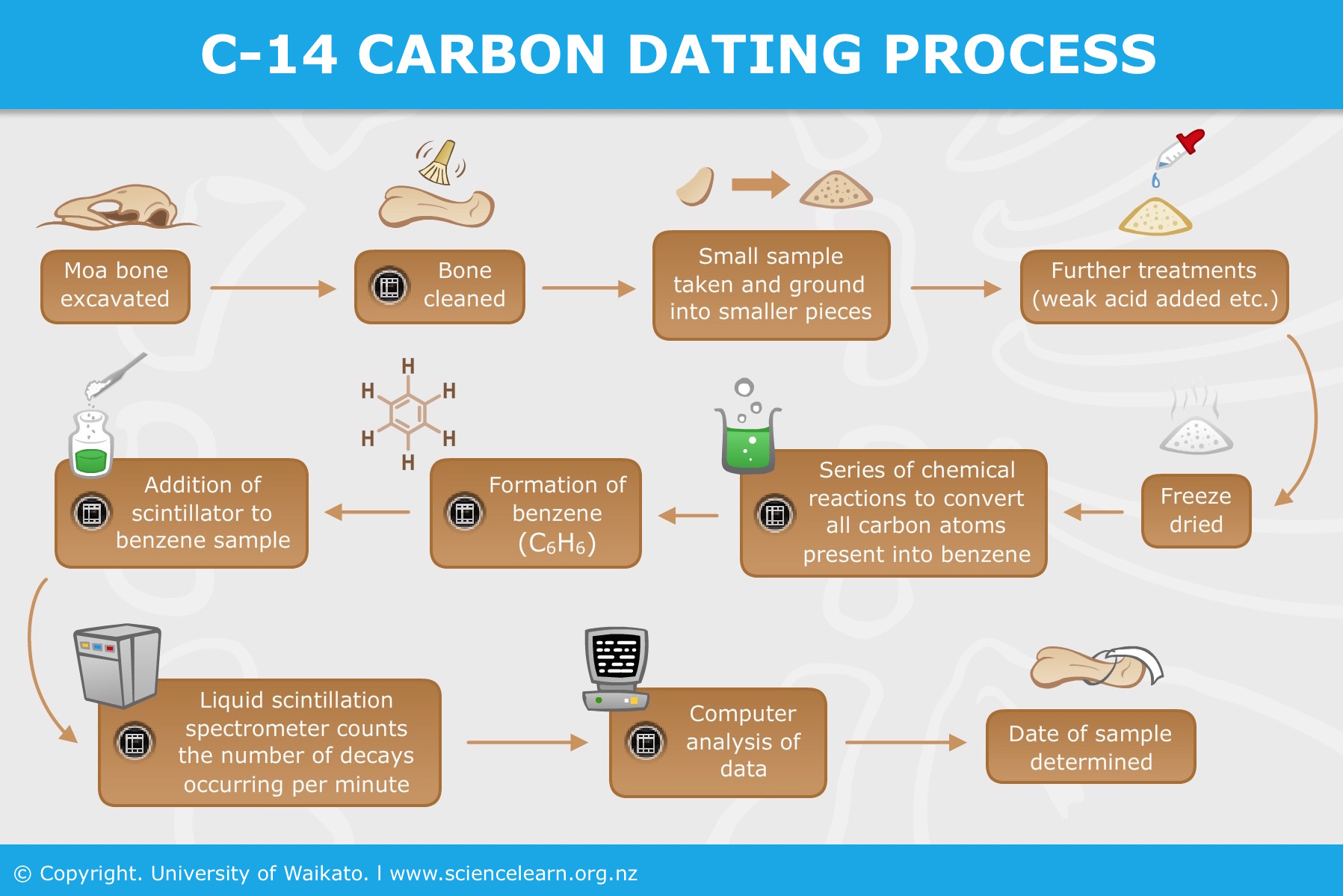CARBON DATING
1.Introduction
Carbon dating is a widely-used method to establish the age of organic materials, things that were once living. Living things have carbon in them in various forms. The dating method is based on the fact that Carbon-14 (C-14), an isotope of carbon with an atomic mass of 14, is radioactive, and decays at a well known rate
2. How it works?
- The most abundant isotope of carbon in the atmosphere is C-12. A very small amount of C-14 is also present. The ratio of C-12 to C-14 in the atmosphere is almost static, and is known.
- Plants get their carbon through photosynthesis; animals get it mainly through food. Because plants and animals get their carbon from the atmosphere, they too acquire C-12 and C-14 in roughly the same proportion as is available in the atmosphere.
- When they die, their interactions with the atmosphere stops. While C-12 is stable, the radioactive C-14 reduces to one half of itself in about 5,730 years known as its ‘half-life’. The changing ratio of C-12 to C-14 in the remains of a plant or animal after it dies can be measured, and can be used to deduce the approximate time when the organism died.

3. About non living things
- Though extremely effective, carbon dating cannot be applied in all circumstances. It cannot be used to determine the age of non-living things like rocks, for example
- Also, the age of things that are more than 40,000-50,000 years old cannot be arrived at through carbon dating. This is because after 8-10 cycles of half-lives, the amount of C-14 becomes almost very small and is almost undetectable
- But there are other methods to calculate the age of inanimate things, many of which are based on the same principle as carbon dating
- So, instead of carbon, decays of other radioactive elements that might be present in the material become the basis for the dating method.
- These are known as radiometric dating methods. Many of these involve elements with half-lives of billions of years, which enable scientists to reliably estimate the age of very old objects
- Two commonly employed methods for dating rocks are potassium-argon dating and uranium-thorium-lead dating
- The radioactive isotope of potassium decays into argon, and their ratios can give a clue about the age of rocks
- Uranium and thorium have several radioactive isotopes, and all of them decay into the stable lead atom. The ratios of these elements present in the material can be measured and used to make estimates about age.
- In some situations, carbon dating can be used indirectly as well. For example, a way in which the age of ice cores in glaciers and polar regions is determined by studying carbon dioxide molecules trapped inside large ice sheets
- The trapped molecules have no interaction with the outside atmosphere, and are found in the same state as when they were trapped
- Determining their age gives a rough estimate of the time when the ice sheets were formed.
Source: indianexpress




